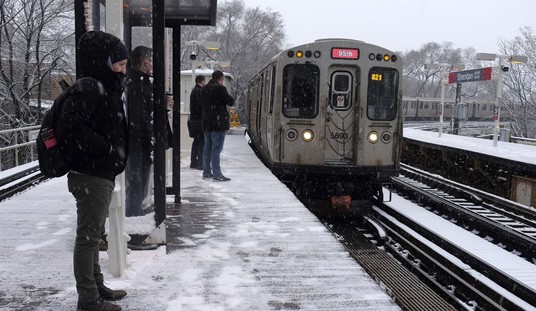To the left, gun control laws are like potato chips; it’s hard to stop with just one. In New York, where it’s already a felony-level offense to simply possess a firearm in your home without first acquiring a license that serves as a backdoor gun registry, lawmakers are now looking to make it equally illegal to make your own gun at home.
Under existing state law it’s already a misdemeanor offense to manufacture a firearm using a 3D printer, but Manhattan D.A. Alvin Bragg and other Democrats are demanding that the penalty for making a home-built firearm be upgraded to a felony.
The goal is to “attack the manufacture” of these kinds of weapons, which can be printed for a fraction of the cost of buying a traditional firearm, said State Senator Brad Hoylman, a sponsor.
The necessary components to create a fully functional 3D printed gun cost about $150 dollars, according to the NYPD.
“We have individuals who that are printing silencers, they’re printing magazines for AR’s and AR-type rifles,” said NYPD Inspector Courtney Nilan.
According to the NYPD, there has been a 75% increase in ghost gun seizures in the past year. 20 ghost guns have been recovered at the scenes of homicides or shootings just in Manhattan since the start of 2022. Since the Manhattan district attorney’s office began keeping track in 2021, there have been 90 ghost gun prosecutions in the office.
“Guns aren’t manufactured in New York,” Bragg said. “Through these printers, that is changing.”
The proposed legislation would criminalize both the printing of guns and the intentional sharing of the digital instructions the printer needs to follow.
Oh cool, so not only a violation of the Second Amendment, but the First Amendment as well. What is code, after all, if not speech?
The state’s existing ban on home-built firearms is already on thin ice from a legal perspective, and increasing the penalty from a misdemeanor to a felony only increases the odds that the courts will hold the ban unconstitutional. Remember, under the test laid out in Bruen, in order for this ban to be valid the state will have to demonstrate that there are historical analogues to their modern day law, and as the Firearms Policy Coalition’s Joseph Greenlee pointed out in an article earlier this year, history points in the opposite direction.
Since the earliest colonial days, Americans have been busily manufacturing and repairing arms. In the colonies, the ability to defend one’s home and community, hunt, fight wars, and ultimately win American independence depended largely on the ability to produce arms. For the newly independent nation, arms production was critical to repel invasions and insurrections, and eventually, to western expansion. The skill was always valued and in demand, and many Americans made their own arms rather than depend on others.
Americans continued producing their own arms in the nineteenth and twentieth centuries, leading to some of the greatest technological breakthroughs in the history of firearms and ammunition. The freedom to build personal arms enabled innovations that allowed Americans to better defend themselves and their country than ever before.
Meanwhile, restrictions on self-made arms have been rare throughout American history. All restrictions on arms built for personal use have emerged within the last decade, and from only a few states. While still uncommon, legislatures are increasingly targeting homemade arms due to the growing popularity of unfinished receivers and 3D-printed firearms. They worry that prohibited persons will evade legal barriers to acquiring firearms by using these resources to build arms themselves. Whether such restrictions are constitutional depends on whether the Second Amendment was originally understood as protecting self-made arms, and whether the regulations are consistent with America’s tradition of firearm regulation.
In Greenlee’s view, “the tradition of building arms for personal use is deeply rooted in American history, and that there is no tradition of regulating self-built arms.”
What’s more, as Greenlee says, “under Supreme Court precedent, common arms are constitutionally protected regardless of how they are acquired. Thus, the Second Amendment protects an arm that is self-built if that type of arm is commonly possessed.”
Supreme Court precedent means nothing to the anti-2A lawmakers in Albany, of course, and Greenlee’s opinion or the prospect of a lawsuit isn’t going to dissuade them from enacting yet another infringement on the fundamental right to keep and bear arms. But increasing the penalties for manufacturing a 3D-printed gun isn’t going to do much to thwart violent criminals who are already breaking the law and illegally arming themselves either. This is a “do something” soundbite solution to addressing violent crime in New York by once again targeting the inanimate object rather than the trigger pullers themselves.









